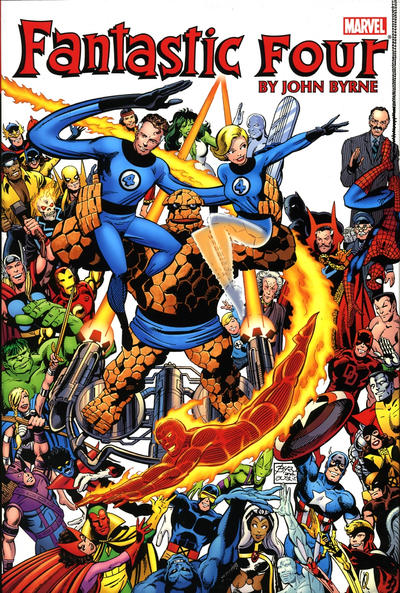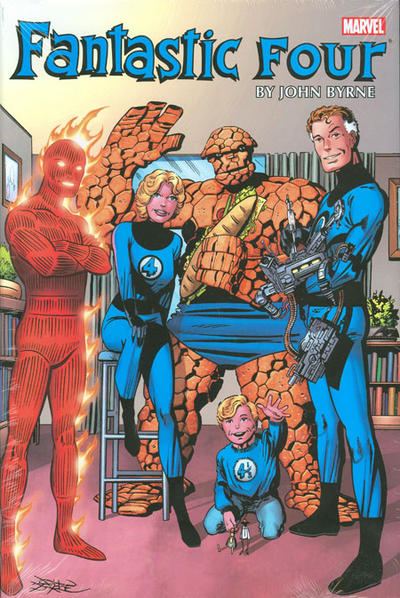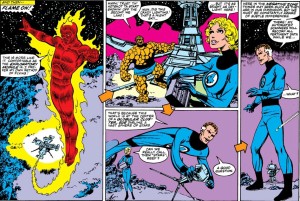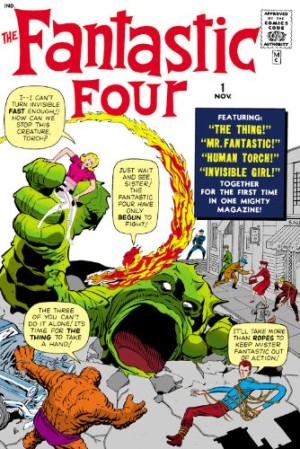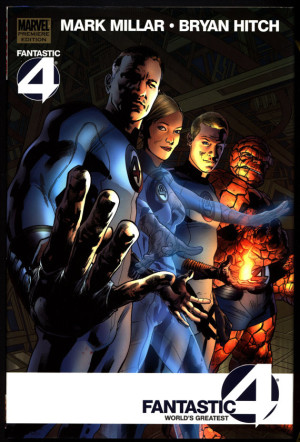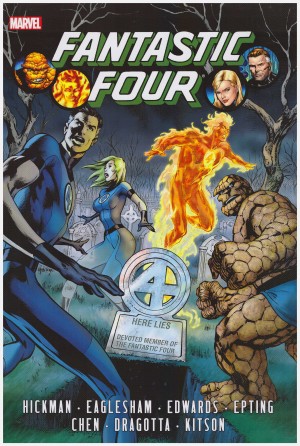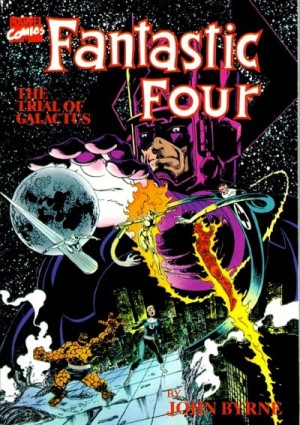Review by Tony Keen
There was a time when Fantastic Four was the flagship of Marvel’s line, the immodestly titled “World’s Greatest Comic Magazine!” This doesn’t mean, of course, that there were no periods in the doldrums. One such occurred in the late 1970s. In 1981, John Byrne, a Marvel superstar artist on the back of his run on X-Men, took over FF. Here, thirty years later, Byrne’s work is given a glossy hardback oversized presentation.
As one might deduce, his run is widely regarded (and was at the time) as a second glory period for the series, second only to the original Stan Lee and Jack Kirby comic. Byrne took a back to basics approach, returning the Fantastic Four to their core – that they were a family. Additionally, they weren’t professional superheroes, as the Avengers were – so Byrne drew their uniforms as if they were actual clothes, rather than skintight costumes.
Byrne’s art aimed at replicating the dynamism of Kirby, without imitating him slavishly. He makes considerable use of one or two page spreads, and there’s one chapter in landscape format rather than portrait. He inks his own pencils here, and he suits his own work – there’s a realistic edge that marks his FF from what had gone before. As writer, in this collection (which reaches to 1983), he consistently delivers interesting stories, handling the old villains well, but also throwing in fresh minor characters and concepts. Stories range from the cosmic to the relatively mundane, and neither seem out of place. Byrne reroots the characters in the everyday, where that connection had been lost, and portrays them all well, and with affection.He seems particularly interested in Susan Storm Richards, and develops her where many previous writers had tended to ignore her.
The very best of the stories here – the twentieth anniversary story, the fight with Gladiator of the Shi’Ar Imperial Guard that marks the 250th issue, a fight with Terrax and Doctor Doom involving the Silver Surfer, and, most enjoyable of all, the Negative Zone/Annihilus saga that crosses into Avengers – are amongst the most successful superhero stories that Marvel published in the early 1980s. Everything from the regular run that is included here is worth reading.
Unfortunately, completist motives mean some material isn’t as good. A couple of years before becoming the writer on FF, Byrne spent about twelve months doing breakdowns for Marv Wolfman and Bill Mantlo’s scripts, though the end result bears more of the imprint of finisher Joe Sinnott. Before that he also drew a couple of team-up tales, one with the Human Torch and Spider-Man, for Marvel Team-Up, and one of the Thing and the Thing, which he also wrote, for Marvel Two-in-One. The team-ups are fine – indeed the MTU one, with a Chris Claremont script, is rather good – but the earlier FF stories show how much a shake-up was necessary. Curiously absent, apart from one issue, is Byrne’s run of writing the solo series for The Thing.
There’s also an otherwise uncollected Lee/Kirby strip, concocted from storyboards Kirby produced for the animated FF show, presented in the twentieth anniversary issue. Kirby was allegedly not pleased about this, and one can see why. This wasn’t intended for public consumption, and it shows.
This omnibus doesn’t have all of Byrne’s FF that you might want – indeed it ends with a cliffhanger; but The Trial of Galactus should give you all that’s left of note beyond that. The material can also be found in Fantastic Four Visionaries by John Byrne, volumes 1–4 and 0.
